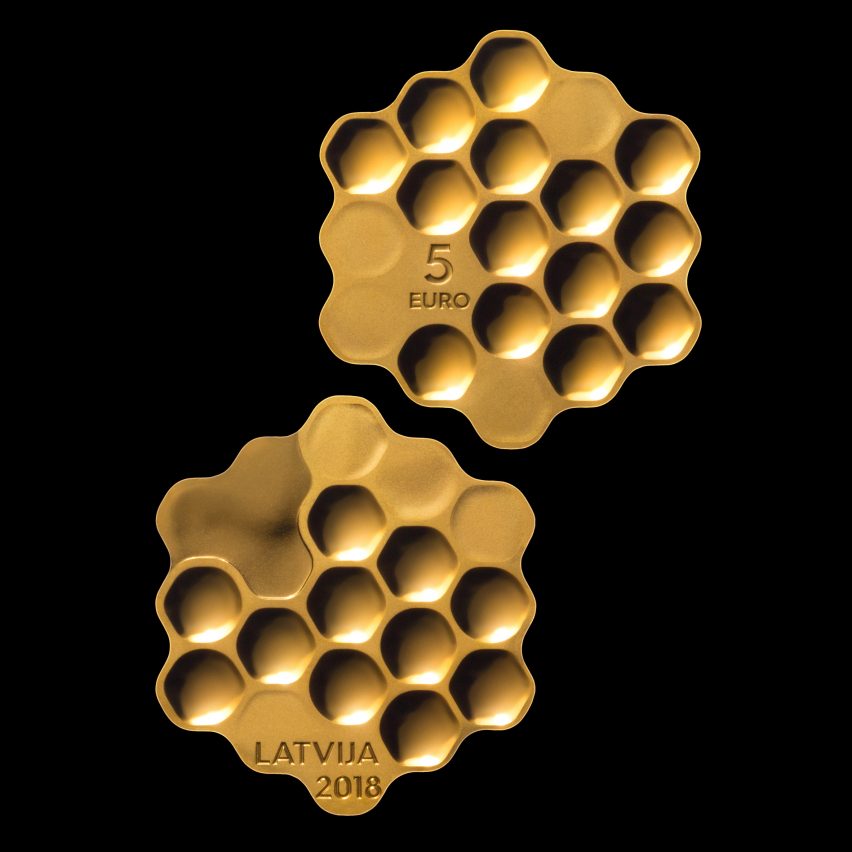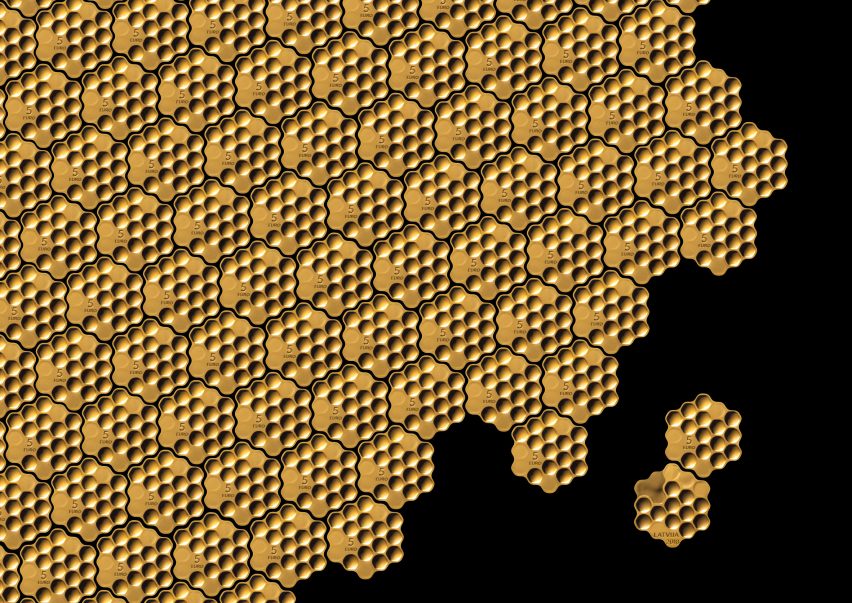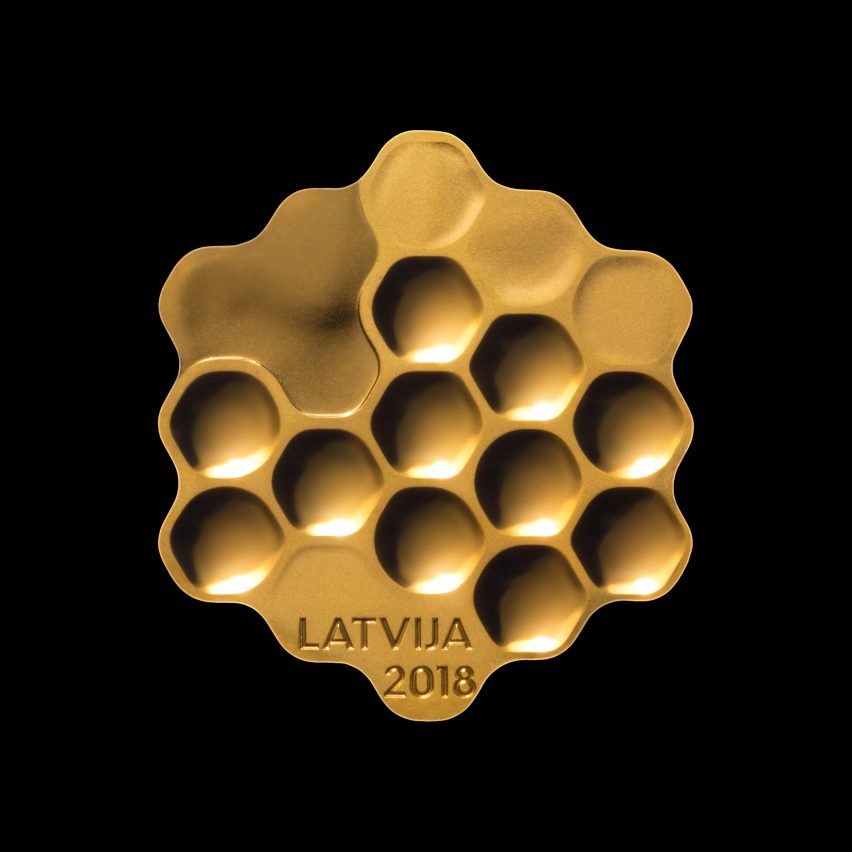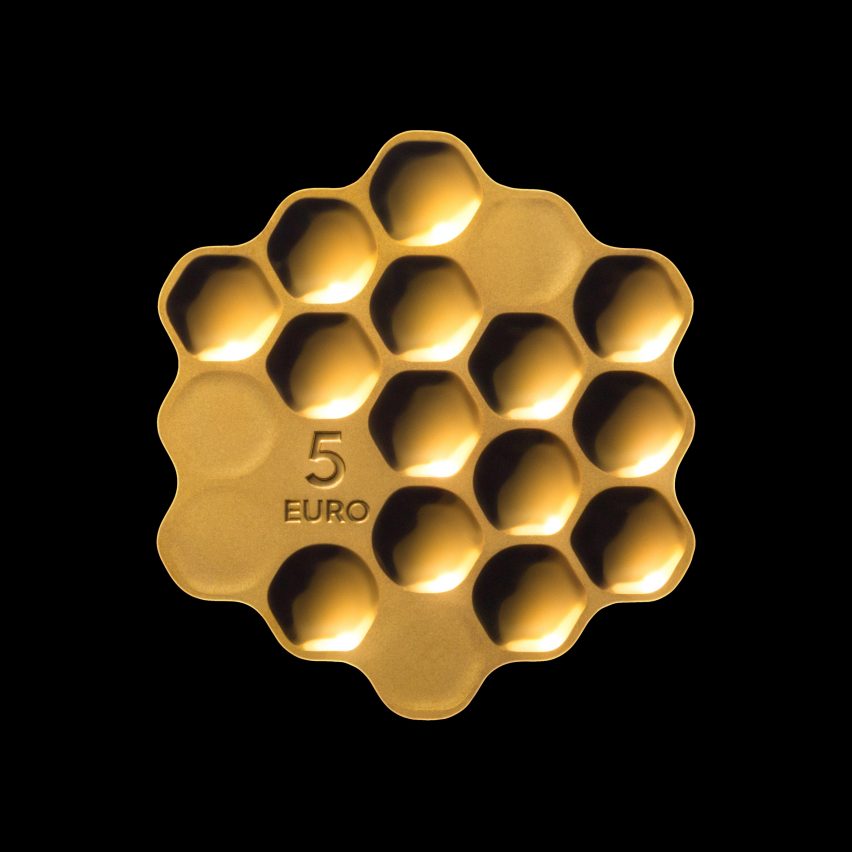Arthur Analts designs honeycomb coin in tribute to Latvia
Latvian designer Arthur Analts has created a €5 coin with a tessellating honeycomb shape, to highlight the abundant natural resources of his home country.
The Honey Coin coin imitates the hexagonal cell structure of honeycomb, where bees store larvae, honey and pollen.
It has six sides, with wavy edges created by the shapes of the cells. Some of these cells are shiny, as if filled with glistening liquid honey, while others are frosted.

Analts won an annual design competition organised by Latvijas Banka to create the coin. It was minted by the Lithuanian Mint and has now been issued by the bank as a collectors' item.
According to Analts, the starting point for the project was a statement by physicist Albert Einstein, claiming that the human species would become extinct within four years if the bee disappeared off the face of the earth.

The London-based designer decided to use the bee as a symbol of Latvia's impressive ecological credentials.
"The idea was to create a coin about Latvia. I was researching and contemplating the potential development routes, and according to statistics, Latvia is one of the greenest countries in the world," said Analts.
"I wanted to show ecology, and that it's really important to us," he continued. "The question was how to do it in a coin."

As well as emulating the texture of honeycomb, the coin also references the geography of Latvia and the Gulf of Riga. On the face of the coin, some of the honeycomb cells are slightly flattened, creating an abstract outline of the country.
LATVIJA is engraved onto the lower left part of the coin, while the year 2018 is inscribed below it.
On the reverse side of the coin, five honeycomb cells are flattened to symbolise the €5 value of the coin. The number 5 is inscribed to the left of the centre, with the word EURO engraved below it.

"These cells are also natural themselves. They may look angular and industrial, yet, if you look deeper, each of them is unique. Each has its own radius, each has its own depth, every one of them is unique," said Analts.
"They seem to be very much alike but they all have something of their own," he continued, "in the same way as probably every Latvian country farm is unique in its own way."
"Honey is a glistening substance, like a mirror, the cells are frosted, that is what we wanted the coin to show. We were playing with materiality, textures, lustre, frosting."
Analts hopes that people will take advantage of the tessellating nature of the shape.
"A person buying several coins will be able to put them together like a puzzle. Each smallest element is a part of something bigger," he added.
The euro is currently used in 19 European countries, including Latvia.
Other designers that have had a go at redesigning currency include Belarusian designer Andrey Avgust, who proposed turning American banknotes 90 degrees, and design agency One Rise East, which created a set of 26 coins to represent an A to Z of modern-day Britain.